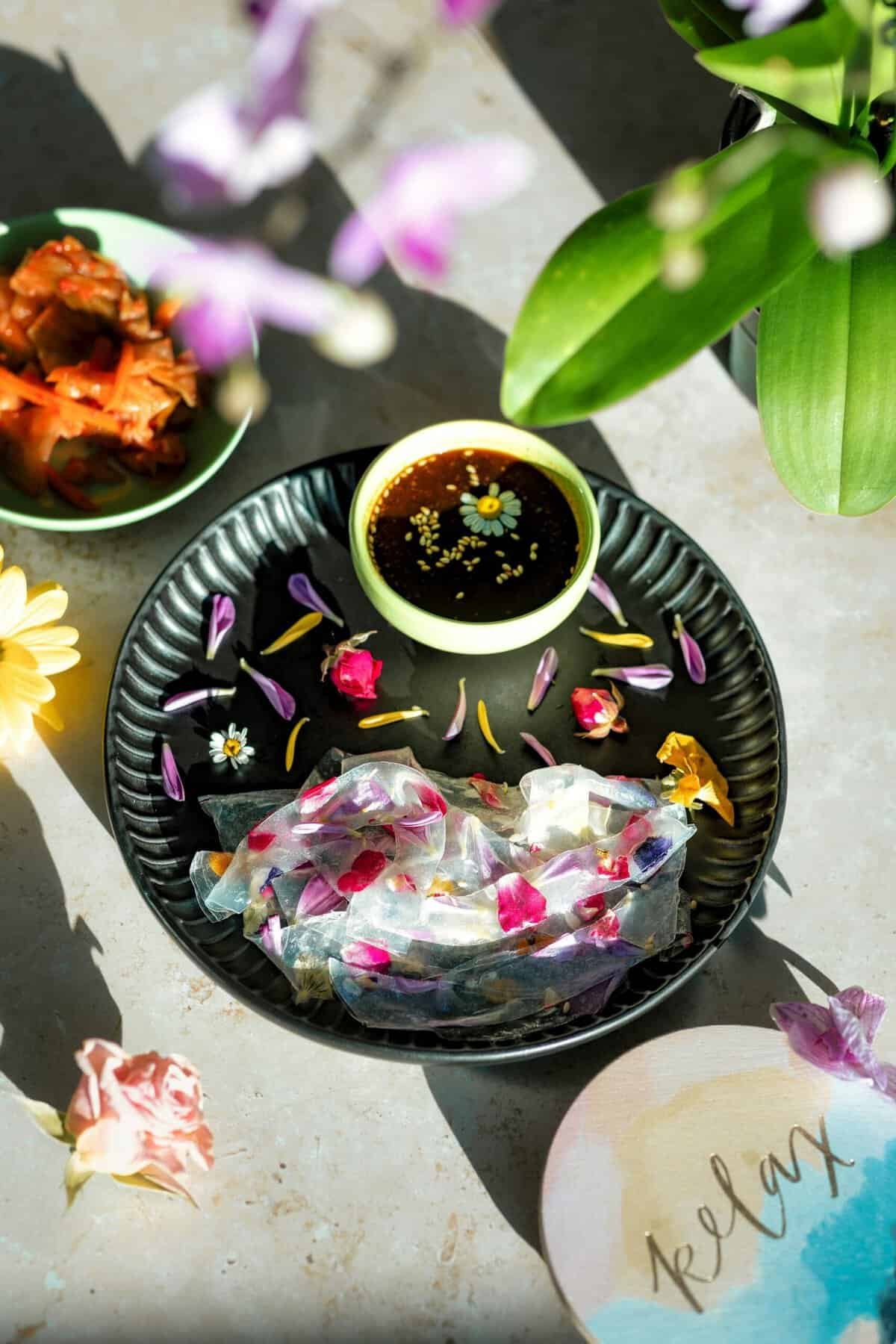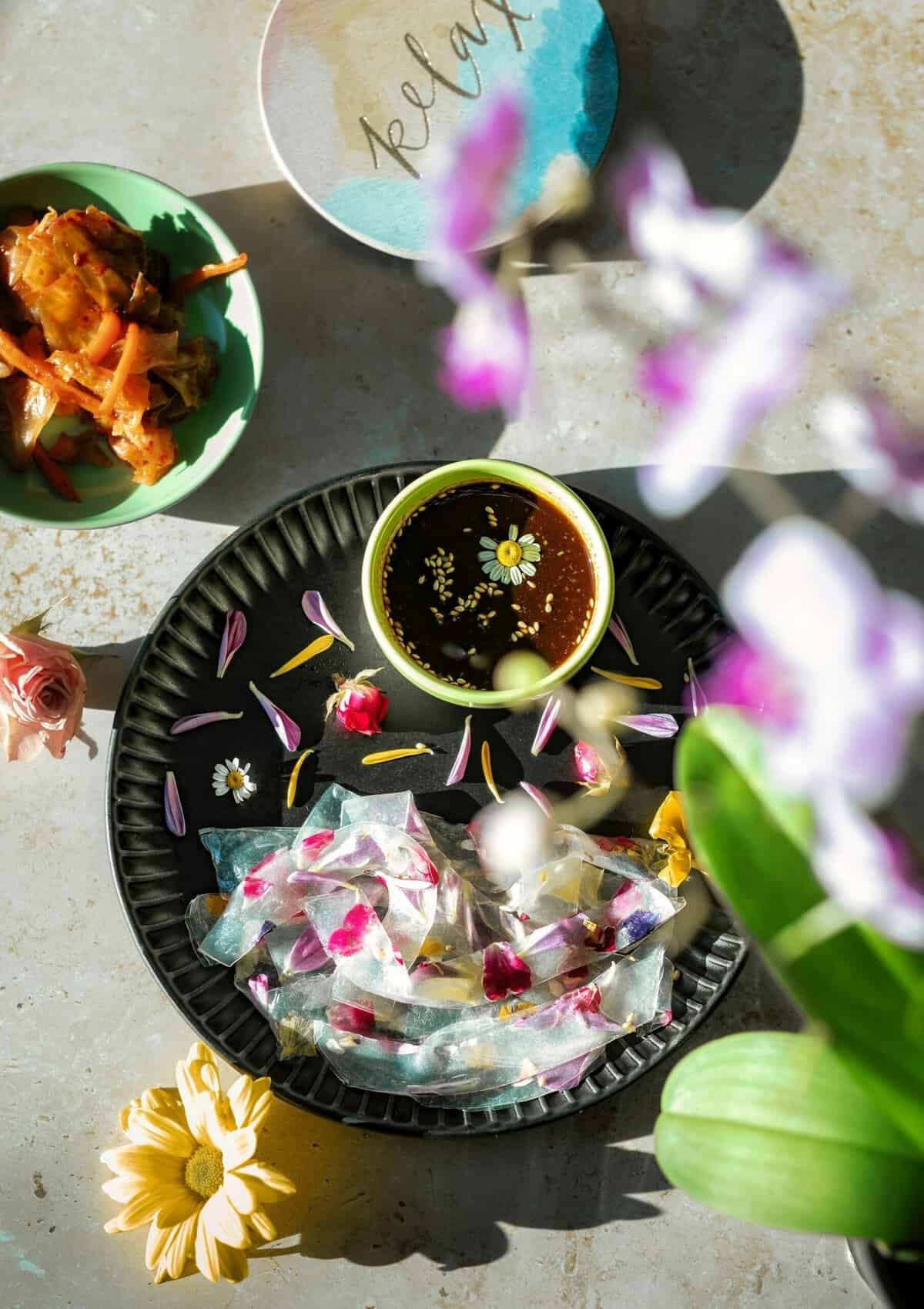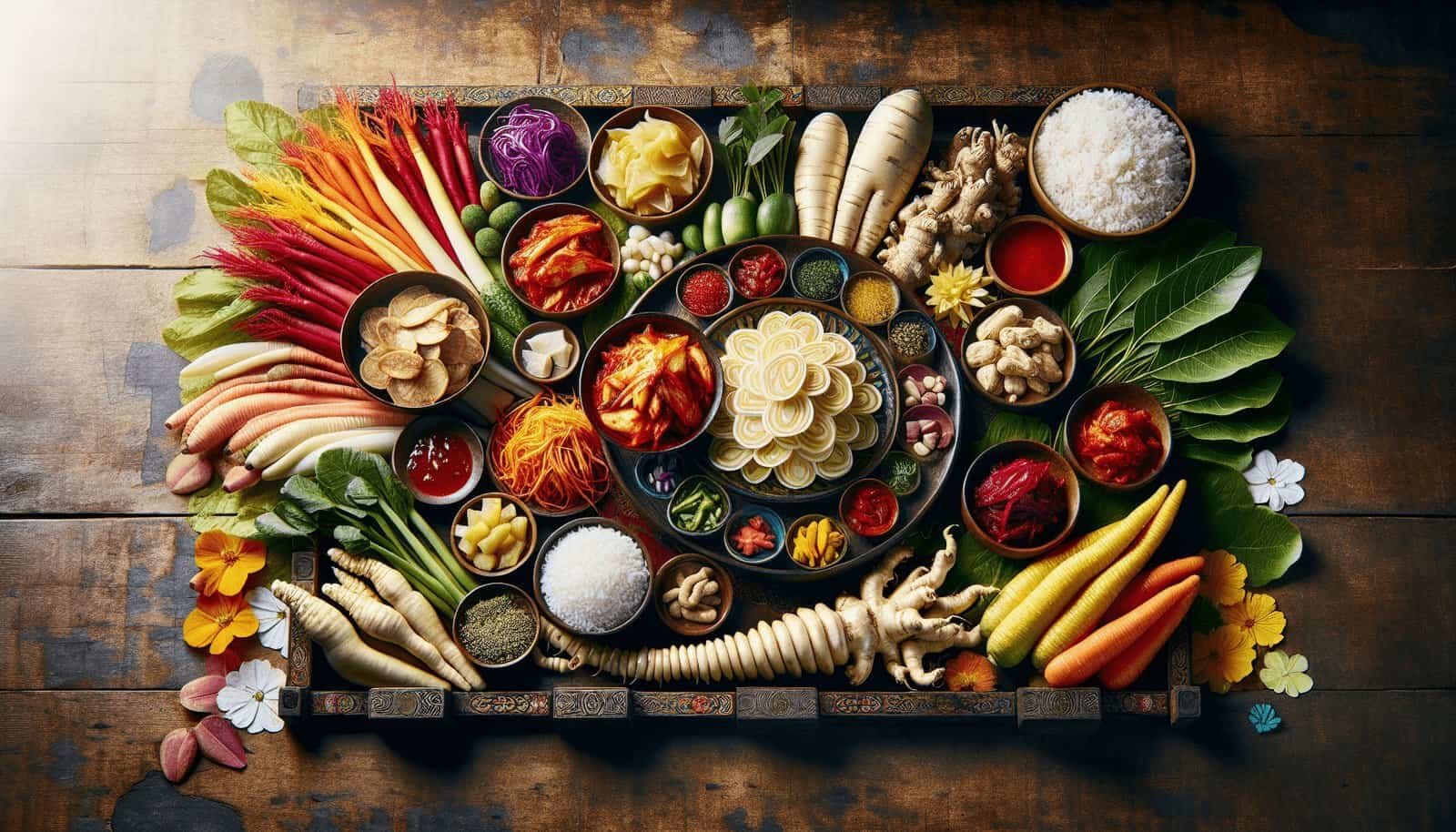Can you share insights into the symbolism of certain ingredients in Korean culture? It’s a fascinating question with deep roots in history, tradition, and social practices. Korean cuisine is not just about flavors and techniques but is also steeped in meaning and symbolism.

The Importance of Food in Korean Culture
Food in Korean culture goes beyond sustenance. It’s a form of communication, a way to express hospitality, love, and respect. The choice of ingredients is significant, each embedded with unique meanings that reflect Korea’s deep cultural values.
Rice: The Staple of Life
Symbol of Sustenance and Prosperity
Rice, or “bap” in Korean, is the cornerstone of every meal and is considered the symbol of life and prosperity. It’s not merely a food item; it’s a representation of hard work, dedication, and sustenance. Rice farming has been an essential part of Korean agriculture for centuries, and its importance is reflected in traditional sayings and customs.
Rice and Ancestor Worship
Rice holds a sacred position in ancestral rites. During these ceremonies, a bowl of rice is placed on the altar as the first offering to the spirits. This act represents respect and a promise to provide for the ancestors in the afterlife, ensuring their continued blessing for their descendants.
Kimchi: Beyond Fermentation
Symbol of Resilience and Unity
Kimchi, the spicy fermented vegetables, often symbolizes Korean resilience and unity. Preparing kimchi, especially during “Kimjang” (kimchi-making season), is a communal activity that brings families and communities together. It underscores the importance of collaboration, sharing, and preservation of traditions.
Health and Longevity
Kimchi is also seen as a symbol of health and longevity due to its probiotic properties. Eating kimchi is believed to improve digestion and boost immunity, contributing to a long and healthy life. This belief is so ingrained that it’s often referred to as a superfood within Korean culture.
Soybeans: A Versatile Element
Symbol of Versatility and Adaptability
Soybeans are highly versatile and used in various forms like tofu (dubu), soy sauce (ganjang), and fermented bean paste (doenjang). This flexibility reflects adaptability and resourcefulness. Soy-based foods are ever-present in Korean meals, symbolizing the ability to transform and persevere through changing times.
Representation in Rituals
In ancestral rites and other ceremonies, soybeans and their by-products are essential. They are considered pure and are used for cleansing purposes. For example, tofu is often believed to absorb impurities, thereby purifying the body and soul.

Ginseng: The Root of Vitality
Symbol of Strength and Longevity
Ginseng (“insam” in Korean) is one of Korea’s most celebrated ingredients, symbolizing strength, health, and longevity. It’s often used in herbal medicine and dishes like “Samgyetang” (ginseng chicken soup), believed to rejuvenate and energize the body. Ginseng is not just a health supplement; it represents a holistic approach to well-being, integrating physical strength and mental clarity.
Gift of Value
Ginseng is often given as a valuable gift, signifying wishes for good health and longevity. It’s common to present ginseng during major life events such as weddings and milestones, showing respect and care for the recipient’s well-being.
Garlic: Protection and Strength
Symbol of Protection
Garlic has long been thought to ward off evil spirits and bring protection. In historical texts and folklore, it’s noted for its protective qualities, both in a physical and spiritual sense. Even in modern times, the pungent aroma of garlic is associated with safeguarding one’s home and health.
Symbol of Strength and Endurance
Garlic is also considered to impart strength and endurance. It’s a staple in many Korean dishes, particularly those that require a robust flavor, symbolizing the fortitude and perseverance inherent in Korean culture.

Red Chili Pepper: Fiery Spirit
Symbol of Passion and Energy
Red chili peppers, or “gochugaru” when dried and ground, are synonymous with Korean food’s fiery nature. The spice represents passion, vitality, and the Korean spirit of “Heung,” an untranslatable word embodying a sense of joy and spontaneous energy.
Ritualistic Uses
In addition to culinary uses, red chili peppers are sometimes used in rituals to ward off bad luck and bring good fortune. The vibrant red color is believed to drive away negative energy and symbolically heat up one’s prospects.
Seaweed: Connection to the Sea and Life
Symbol of Life and Birth
Seaweed, known as “gim” when dried and “miyeok” when fresh, holds a special place in Korean culture. It’s traditionally eaten on birthdays, especially by mothers who have just given birth, symbolizing life and regeneration. This practice dates back to a belief that seaweed’s high nutrient content would help a mother recover and produce healthy milk for her newborn.
Cultural Significance in Rituals
Seaweed is also commonly used in memorial rites, coated with oil, and soy sauce to offer to the deceased. This act underscores seaweed’s role as a bridge between life and death, a symbol of eternal life.

Pine Nuts: Purity and Nobility
Symbol of Purity
Pine nuts are often used in “Samgyetang” and traditional Korean sweets like “Dasik.” They symbolize purity and are believed to cleanse the spirit. They also represent enduring strength, much like pine trees that remain green throughout the year.
Association with Nobility
Historically, pine nuts were considered a luxury ingredient, often reserved for the noble and royal class. Using pine nuts in dishes, even today, can signify a dish of high quality, emphasizing the ingredient’s esteemed status.
Korean Pear: Elegance and Gratitude
Symbol of Elegance
The Korean pear, or “bae,” is not just a sweet fruit but a symbol of elegance and purity. Its crisp texture and refreshing taste represent sophistication and clarity. The pear’s shape, resembling a golden orb, is often associated with perfection and completeness.
Expression of Gratitude
Korean pears are a popular gift, especially during Chuseok (Korean Harvest Festival) and other significant holidays. They symbolize gratitude and are given to express thanks and appreciation.

Tteok (Rice Cake): Celebration and Good Fortune
Symbol of Celebration
“Tteok” is a traditional rice cake often used in celebrations like weddings, birthdays, and Lunar New Year. Each variety of “tteok” has its unique meaning, but collectively they symbolize prosperity, health, and happiness. The act of sharing “tteok” signifies unity and community.
Offerings in Rituals
Tteok is also used in ancestral rites, typically placed on altars to honor the spirits of the deceased. This practice reflects the deep respect and remembrance Koreans have for their ancestors, ensuring their favor and bless.
Mugwort: Healing and Spirituality
Symbol of Healing
Mugwort, or “ssuk,” is commonly used in traditional Korean medicine and cuisine. It symbolizes healing and is often used in soups, rice cakes, and teas for its medicinal properties. Mugwort is valued for its ability to purify the body and mind, making it a staple in wellness practices.
Spiritual Significance
Mugwort also holds spiritual significance, often used in rituals believed to cleanse spaces and ward off evil spirits. Burning mugwort is a common practice in various traditional ceremonies to promote spiritual wellness and protection.
Sesame Oil: Richness and Depth
Symbol of Richness
Sesame oil is a fundamental component of Korean cooking, representing richness and depth of flavor. It’s used in various dishes to enhance taste and symbolizes wealth and abundance, reflecting the oil’s luxurious and aromatic qualities.
Cultural Symbolism
Sesame seeds and oil are also significant in rituals, symbolizing fertility and prosperity. They are often used in wedding ceremonies and other celebrations to invoke wealth and fruitful life for the new couple.
Conclusion
In Korean culture, food is a complex tapestry woven with deep symbolism and meaning. Every ingredient carries its unique significance, reflecting values like health, prosperity, unity, and respect for nature and ancestors. Understanding these meanings offers a richer appreciation of Korean cuisine and its cultural heritage, showcasing how deeply intertwined food and tradition truly are.
As you explore Korean food, remember it’s not just about what you taste but also what each bite represents. Each ingredient tells a story, carrying forward traditions and cultural values that have been cherished for generations.
